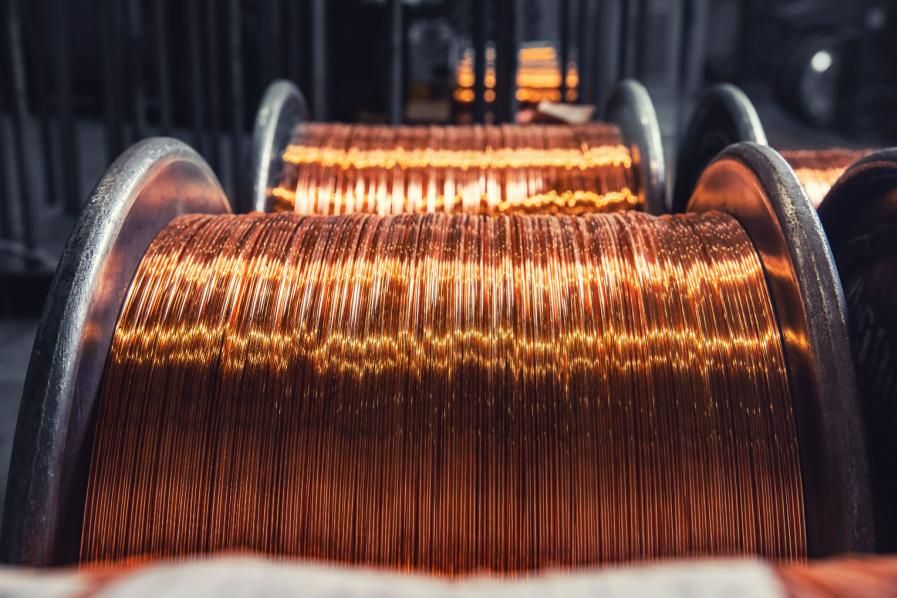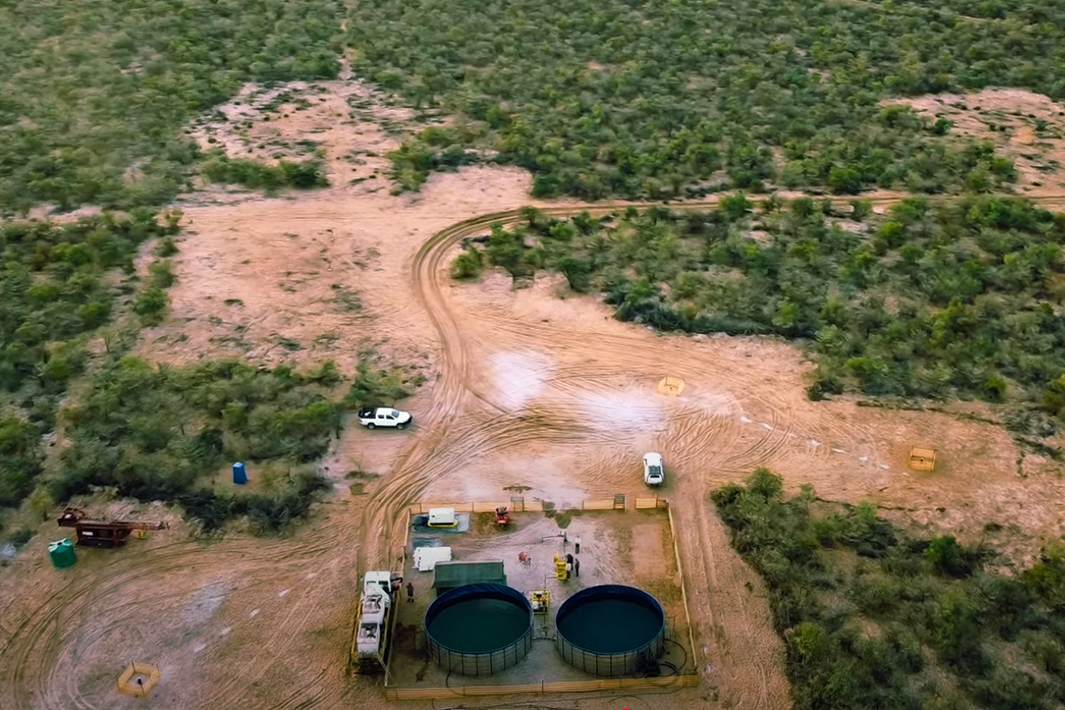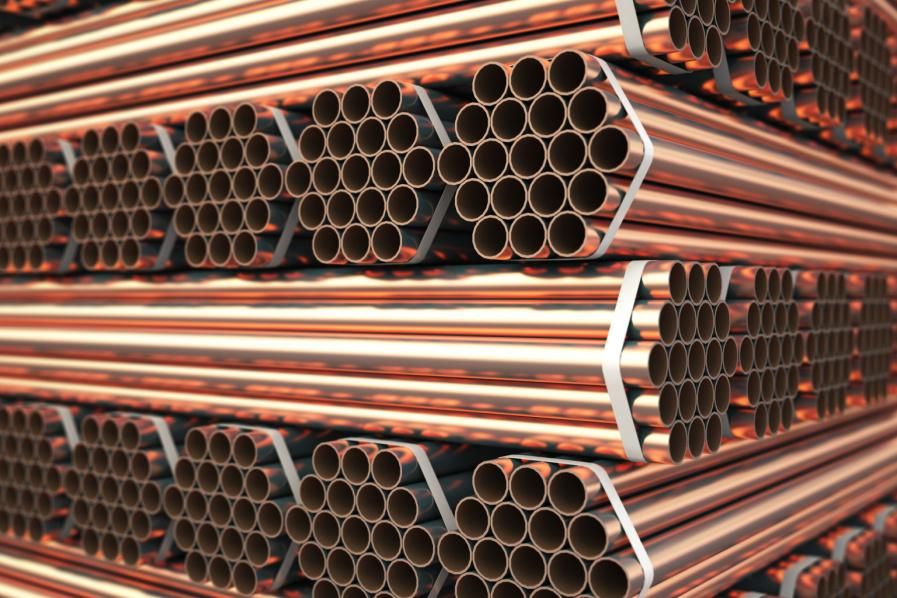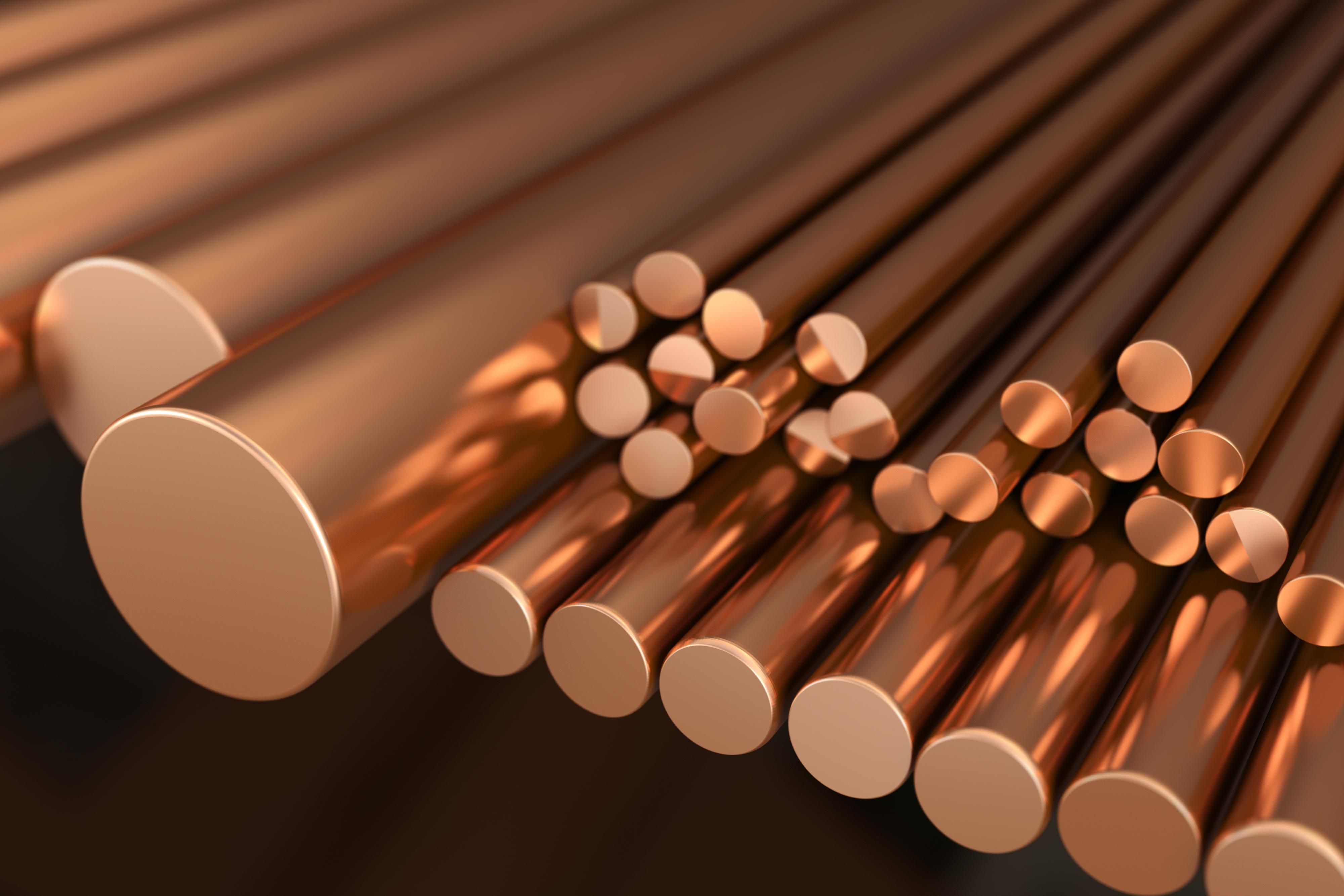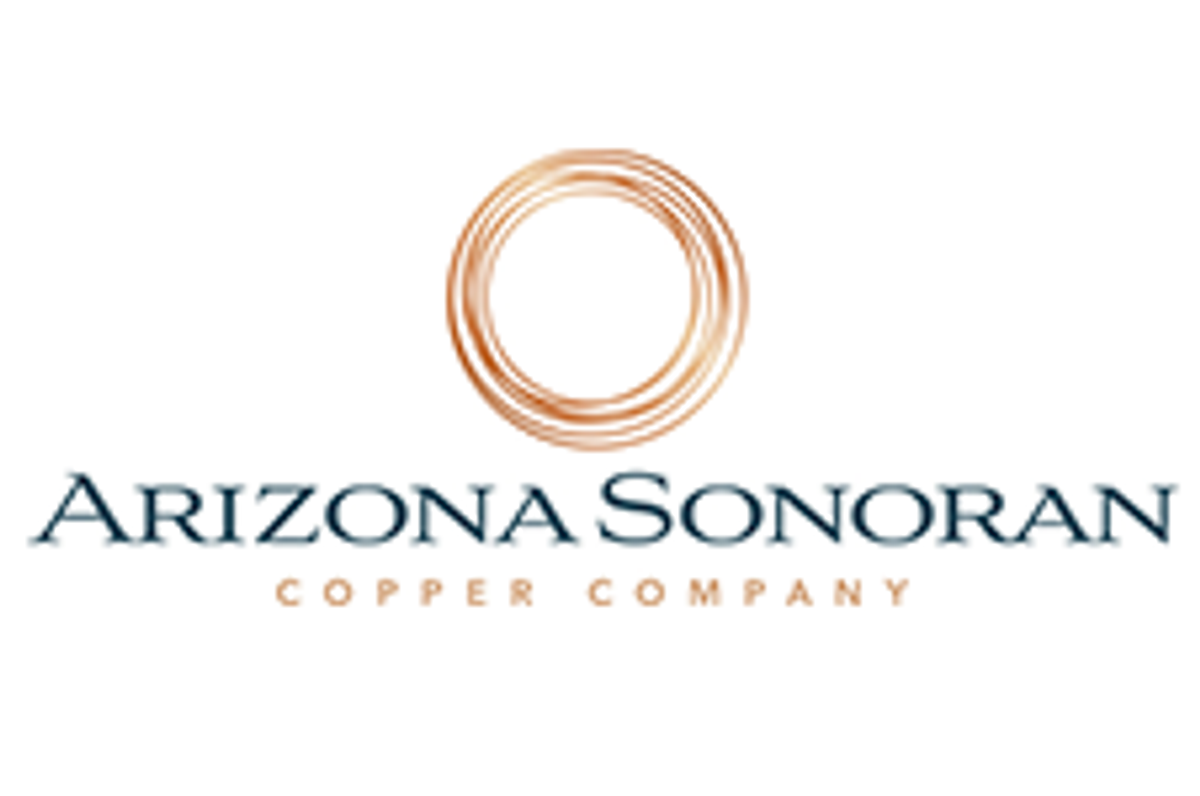
- NORTH AMERICA EDITIONAustraliaNorth AmericaWorld
October 16, 2023
Arizona Sonoran Copper Company Inc. (TSX:ASCU) (“ASCU” or the “Company”), releases its Mineral Resource Update (“MRE”) for the combined Cactus, Stockpile and Parks/Salyer deposits, together the “Cactus Project”, located 45 miles south of Phoenix, Arizona (see FIGURES 1-7). The upgraded MRE is expected to form the basis for the ASCU Pre-Feasibility Study (“PFS”), targeting a 45-50 ktpa copper cathode heap leach and SXEW operation, and is on track for release in Q1 2024. The brownfields project is wholly-owned and located on private land in Arizona with ~$30 million of infrastructure onsite, an advanced permitting stage, approved water rights and access to water.
Highlights:
- 445,700 ktons at a Grade of 0.58% CuT for 5.17 Billion Pounds of Copper (M&I), a 221% conversion of pounds from the Inferred category
- 357,600 ktons leachable at a Grade of 0.62% Cu TSol for 4.43 Billion Pounds of Copper (M&I), a 316% conversion of pounds from the inferred category
- Cactus strengthens its position within the top 10 copper development assets in the USA (sourced from S&P copper projects in the USA, August 2023)
The Company will host a webinar tomorrow, Tuesday October 17, at 10:00 am ET by President and CEO, George Ogilvie and Resource Geologist, Anthony Bottrill. Please register to join here.
Table 1: The Cactus Project Mineral Resource Estimate, as of August 31, 2023.
NOTES:
1. Leachable copper grades are reported using sequential assaying to calculate the soluble copper grade. Primary copper grades are reported as total copper, Total category grades reported as weighted average copper grades of soluble copper grades for leachable material and total copper grades for primary material. Tons are reported as short tons.
2. Stockpile resource estimates have an effective date of 1st March, 2022, Cactus resource estimates have an effective date of 29th April, 2022, Parks/Salyer resource estimates have an effective date of 19th May, 2023. All resources use a copper price of US$3.75/lb.
3. Technical and economic parameters defining resource pit shell: mining cost US$2.43/t; G&A US$0.55/t, 10% dilution, and 44°-46° pit slope angle.
4. Technical and economic parameters defining underground resource: mining cost US$27.62/t, G&A US$0.55/t, and 5% dilution,
5. Technical and economic parameters defining processing: Oxide heap leach (HL) processing cost of US$2.24/t assuming 86.3% recoveries, enriched HL processing cost of US$2.13/t assuming 90.5% recoveries, Primary mill processing cost of US$8.50/t assuming 92% recoveries. HL selling cost of US$0.27/lb; Mill selling cost of US$0.62/lb.
6. Royalties of 3.18% and 2.5% apply to the ASCU properties and stateland respectively. No royalties apply to the MainSpring (Parks/Salyer South) property.
7. For Cactus: Variable cutoff grades were reported depending on material type, potential mining method, and potential processing method. Oxide material within resource pit shell = 0.099% TSol; enriched material within resource pit shell = 0.092% TSol; primary material within resource pit shell = 0.226% CuT; oxide underground material outside resource pit shell = 0.549% TSol; enriched underground material outside resource pit shell = 0.522% TSol; primary underground material outside resource pit shell = 0.691% CuT.
8. For Parks/Salyer: Variable cut-off grades were reported depending on material type, associated potential processing method, and applicable royalties. For ASCU properties - Oxide underground material = 0.549% TSol; enriched underground material = 0.522% TSol; primary underground material = 0.691% CuT. For stateland property - Oxide underground material = 0.545% TSol; enriched underground material = 0.518% TSol; primary underground material = 0.686% CuT. For MainSpring (Parks/Salyer South) properties - Oxide underground material = 0.532% TSol; enriched underground material = 0.505% TSol; primary underground material = 0.669% CuT.
9. Mineral resources, which are not mineral reserves, do not have demonstrated economic viability. The estimate of mineral resources may be materially affected by environmental, permitting, legal, title, sociopolitical, marketing, or other relevant factors.
10. The quantity and grade of reported inferred mineral resources in this estimation are uncertain in nature and there is insufficient exploration to define these inferred mineral resources as an indicated or measured mineral resource; it is uncertain if further exploration will result in upgrading them to an indicated or measured classification.
11. Totals may not add up due to rounding.
Highlights:
- 221% increase of total Measured and Indicated (“M&I”) resources (including primary resources), and a 9% increase of grade, resulting in a 55% decrease of Inferred resources due to upgrading of material
- MRE including Primary Resource Opportunity
- M&I 445.7 Mt @ 0.58% Cu for 5.17 billion pounds of copper
- Inferred 233.8 Mt @ 0.47% Cu for 2.21 billion pounds of copper
- Leachable (Oxide and Enriched) Mineral Resource
- M&I category increases by 316%: 357.6 million tons (“Mt”) at 0.62% Soluble Copper (“Cu TSol”) for 4.43 billion lbs of copper
- Inferred Category decreases by 64%: 107.7 Mt at 0.61% Cu TSol for 1.31 billion lbs of copper due to upgrading of material
- Low discovery cost - $0.005 / lb per pound
- +1.0% Soluble Copper Grades – specifically, Parks/Salyer contains 130Mt @ 1.028% Cu Tsol and Cactus East contains 41.2Mt @ 1.057% Cu TSol within M&I resources reporting to underground resource cutoff grades.
- Continuity confirmed – total drill database includes 526,000 ft (160,420 m) of drilling in 900 holes, resulting in demonstrated consistency of mineralization overall and a significant upgrade of the Parks/Salyer Deposit from the last MRE
- High Quality – first declaration of Measured mineral resources and significant conversion of Inferred mineral resources to the Indicated category which have the potential to be used to declare first reserves in the pending Pre-Feasibility Study expected in Q1 2024
- Location Advantages – set within Casa Grande’s industrial park and connected to nationwide transportation (highway and railroad), a streamlined permitting process, access to Arizona Public Service power, and access to water
- Growth – ongoing drilling will focus on Parks/Salyer southern extensions (Parks/Salyer South property); exposure to a 4 km mine trend with pockets of mineralization known south of Parks/Sayler, in the Gap Zone and NE of Cactus East
- Next Steps – Continue decreasing drill spacings to 125 ft (38 m) for future studies; begin drilling at the MainSpring (Parks/Salyer South) property
George Ogilvie, Arizona Sonoran Copper Company commented, “Our team has completed yet another key milestone in the process of reactivating the Cactus Mine. Driven through textbook infill drilling programs at Parks/Salyer and Cactus, our team readies an already significant copper asset in Arizona, USA for the next step in technical reporting; 3.6 billion pounds of Copper were added and converted to the M&I category for a new M&I mineral resource of 5.2 billion pounds. The leachable Copper M&I category now stands at 4.4 billion pounds of Copper and will act as the foundation for our upcoming PFS. The PFS remains on track and on budget for Q1 2024. I look forward to our team continuing to deliver on key objectives over the next year.”
Drilling programs
The updated MRE is supported by systematic drilling programs targeting the NE end of the 11 km (~7 mi) by 1.6 km (~1 mi) Santa Cruz porphyry copper system, of which ASCU has access to 5.5 km (~3.5 mi). In ground mineral resources were calculated in the Measured category using drill data of 125 ft (38 m) drill spacing, indicated at 250 ft (76 m) and inferred at 500 ft (~152 m). The mineral resource was calculated using 80,715 ft (~24,600 m) of new drilling into the Cactus deposits since May 2021, and new Parks/Salyer drilling totals 57,250 ft (~17,500 m) from July 2022 to March 2023. The 3D models in FIGURE 4 illustrate the exploration success since the initial Cactus MRE was issued in 2021, and reflects the tightly drilled nature of the deposits. Resulting from upgrading the Parks/Salyer resource into the Indicated category, ASCU continues to target a 45-50 ktpa copper cathode operation heap leach and SX/EW operation. A comparison of each deposit is listed below in TABLES 2-5.
Drilling conducted after April 2023 will form the basis of a further mineral resource update in 2024 with the goal of converting indicated resources from early in the mine plan into the measured resource classification for a Feasibility Study expected in Q4 2024. Exploration drill data received from the planned MainSpring (Parks/Salyer South) drilling program is intended for inclusion to the update of mineral resources in 2024.
Geology
The known resource areas within the Cactus Project area are variably sized fragments of the structurally dismembered larger Santa Cruz Porphyry System that has been faulted and displaced by Tertiary extension. The mineralized horst blocks, which can start from surface (e.g. at the discovery outcrop) may be overlain by up to 1,500 ft (460 m) of post-mineral Tertiary conglomerates and a thin veneer of alluvium. Major host rocks at Cactus are Precambrian Oracle granite and Laramide monzonite porphyry. The porphyries intruded older rocks to form mixed and monolithic breccias that occur as large masses, poorly defined dike-like masses, and thin well-defined dikes. The mineralization is structurally complex with intense fracturing, faulting, and both pre-mineral and post-mineral brecciation. The continuity of lithology and alteration/mineralization styles throughout the Project area suggests that the resource areas were once connected. These identifiable trends aid in the exploration for extensions of known resources and the modelling of the resources themselves. All resource areas are terminated at depth by the basement fault, a low angle structure that underlies the project area. All resource areas contain both oxide and enriched (secondary sulphide) copper mineralization, with primary sulphide underlying the secondary, as is typical of these systems.
Cactus Project Resource Modelling
The geological modelling, statistical analysis, and resource estimation were prepared by the ASCU resource team and by Allan Schappert – CPG #11758, who is a qualified person as defined by National Instrument 43-101– Standards of Disclosure for Mineral Projects.
The Cactus Project resource updates are based upon updated drilling data and interpretations. The Cactus Mineral Resource model was developed in Vulcan. The database used to generate the Mineral Resources comprised 305 drill holes, 309,418.5 ft (94,310.8 m) for Cactus; 77 drillholes, 172,166.3 ft (52,476.3 m) for Parks/Salyer; 518 drillholes, 44,728.2 ft (13,633.2 m) for the stockpile. Drilling data is supported by industry standard quality assurance and quality control programs, with quality control sampling comprising preparation blanks, certified reference materials, and field and pulp duplicate analyses. Review of the QA/QC data indicates it is of a quality suitable for use in resource estimation.
The mineralized domains are consistent with domaining for porphyry copper systems. Mineralized domains represent combinations of rock type and copper mineral zonation associated with secondary copper enrichment weathering processes. The main mineral zones being leached, oxide, enriched, and primary. Mineral zones are determined by logging and the assay attributes of sequential copper analyses.
Physical density measurements have been undertaken across the deposits, both historically by ASARCO, and more recently by ASCU. Density measurements on insitu deposits use the wet / dry weight method and comprise 3,372 samples for Cactus and 147 samples for Parks/Salyer. Due to the unconsolidated nature of the stockpile material, physical bulk density measurements were attained by weight and volume calculations. Four test holes were excavated from which the material removed was dried and weight and the volume of each hole calculated.
Copper grades were estimated using Ordinary Kriging, using 10 ft (3 m) composites and top cutting determined by log normal probability plots on a per domain basis. Grade estimates were validated using visual and statistical methods including statistical distribution comparisons, visual comparison against the drilling data on sections, swath plots comparing block grades trends against de-clustered composites, and by smoothing checks using change of support.
TABLE 2: Parks/Salyer Deposit
NOTES: refer to TABLE 1
*Denotes Cu TSol, generated using a sequential assaying technique to calculate the grade of the soluble copper.
Parks/Salyer’s new total leachable Indicated mineral resource totals 2,677 Mlbs vs an Inferred mineral resource in the 2022 PEA of 2,461Mlbs. The increase to the total Indicated mineral resources are attributed to successful infill drilling performing better than the initial wide spaced Inferred drilling, inclusion of mineral resources under the new 2.5 acre Mineral Exploration Permit (“MEP”) obtained on October 3, 2024, and a minimal natural extension of mineralization onto the MainSpring (Parks/Salyer South) property. As previously stated, the MEP and MainSpring (Parks/Salyer South) properties minimize sterilization of the deposit, due to boundaries.
TABLE 3: Cactus East, Underground Resource outside of Cactus Open Pit Resource
NOTES: refer to TABLE 1
*Denotes Cu TSol, generated using a sequential assaying technique to calculate the grade of the soluble copper.
Measured and Indicated drilling programs at the Cactus Deposits (TABLES 3 and 4) were focused on upgrading Inferred mineral resources from the PEA mine plan to support the PFS. The total M&I leachable resources reported for the Cactus deposits of 156.3Mt @ 0.491% Cu TSol are located within the combined open pit and underground mineral resources. Of this material, Cactus East contains 41.2Mt @ 1.057% Cu TSol of leachable M&I mineral resources when reporting above underground cutoff grades. Reductions of the underground inferred resources reflect additional material incorporated into the open pit indicated resources.
TABLE 4: Cactus Open Pit, inclusive of Cactus West and Cactus East
NOTES: refer to TABLE 1
*Denotes Cu TSol, generated using a sequential assaying technique to calculate the grade of the soluble copper
TABLE 5: Stockpile
NOTES: refer to TABLE 1
As with the Parks/Salyer conversion, the Stockpile conversion from Inferred to Indicated classification was significant. Previously classed entirely as Inferred, drilling converted 217 million pounds at 0.153% Cu TSol into the Indicated category, with 3 million pounds remaining as Inferred mineral resources. This change represents a slight reduction in total pounds as the outer edge of the stockpile was confirmed to have a waste window in parts. The grade increased and the infill drilling confirmed relationships seen in the inferred model with the upper lift containing 52% of the pounds, from 45% of the tons; attributable to higher copper grades present in that lift.
Quality Assurance / Quality Control
Drilling completed on the project between 2020 and 2022 was supervised by on-site ASCU personnel who prepared core samples for assay and implemented a full QA/QC program using blanks, standards, and duplicates to monitor analytical accuracy and precision. The samples were sealed on site and shipped to Skyline Laboratories in Tucson AZ for analysis. Skyline’s quality control system complies with global certifications for Quality ISO9001:2008.
Scientific and technical information contained in this news release have been reviewed and verified by Allan Schappert – CPG #11758, who is a qualified person as defined by National Instrument 43-101– Standards of Disclosure for Mineral Projects.
Links from the Press Release
Register for Townhall: https://www.bigmarker.com/vid-conferences/ASCU-Cactus-Update
September 28, 2022: https://arizonasonoran.com/news-releases/arizona-sonoran-doubles-global-leachable-resource-inventory-and-declares-maiden-mineral-resources-at-parks-salyer-of-2.92/
Figures: https://arizonasonoran.com/projects/cactus-mine-project/press-release-images/
Neither the TSX nor the regulating authority has approved or disproved the information contained in this press release.
About Arizona Sonoran Copper Company (www.arizonasonoran.com | www.cactusmine.com)
ASCU’s objective is to become a mid-tier copper producer with low operating costs and to develop the Cactus and Parks/Salyer Projects that could generate robust returns for investors and provide a long term sustainable and responsible operation for the community and all stakeholders. The Company’s principal asset is a 100% interest in the Cactus Project (former ASARCO, Sacaton mine) which is situated on private land in an infrastructure-rich area of Arizona. Contiguous to the Cactus Project is the Company’s 100%-owned Parks/Salyer deposit that could allow for a phased expansion of the Cactus Mine once it becomes a producing asset. The Company is led by an executive management team and Board which have a long-standing track record of successful project delivery in North America complemented by global capital markets expertise.
Forward-Looking Statements
This press release contains certain information that may constitute "forward-looking information" under applicable Canadian securities legislation. Forward looking information includes, but is not limited to, the potential of the Cactus Project, timing of economic studies and mineral resource estimates including the PFS, timing of receipt of permits and commencement of construction, the ability to sell marketable materials, strategic plans, including future exploration and development results, and corporate and technical objectives. Forward-looking statements involve known and unknown risks, uncertainties and other factors which may cause the actual results, performance or achievements of ASCU to be materially different from any future results, performance or achievements expressed or implied by the forward-looking statements. Factors that could affect the outcome include, among others: future prices and the supply of metals; the results of drilling; inability to raise the money necessary to incur the expenditures required to retain and advance the properties; environmental liabilities (known and unknown); general business, economic, competitive, political and social uncertainties; results of exploration programs; accidents, labour disputes and other risks of the mining industry; political instability, terrorism, insurrection or war; or delays in obtaining governmental approvals, projected cash operating costs, failure to obtain regulatory or shareholder approvals.
Although ASCU has attempted to identify important factors that could cause actual actions, events or results to differ materially from those described in forward-looking statements, there may be other factors that cause actions, events or results to differ from those anticipated, estimated or intended. Forward-looking statements contained herein are made as of the date of this news release and ASCU disclaims any intention or obligation to update or revise any forward-looking statements, whether as a result of new information, future events or results or otherwise, except as required by applicable securities laws.
Contacts
For more information:
Alison Dwoskin, Director, Investor Relations
647-233-4348
adwoskin@arizonasonoran.com
George Ogilvie, President, CEO and Director
416-723-0458
gogilvie@arizonasonoran.com
ASCU:CA
The Conversation (0)
2h
Canadian Approval Pushes Teck, Anglo Closer to Creating US$53 Billion Miner
Canada has approved the merger of Teck Resources (TSX:TECK.A,TECK.B,NYSE:TECK) and Anglo American (LSE:AAL,OTCQX:AAUKF), clearing a major regulatory hurdle for the creation of a new global mining heavyweight worth over US$53 billion.Teck and Anglo American said they received approval under the... Keep Reading...
20h
Top 5 Junior Copper Stocks on the TSXV in 2025
Junior copper stocks are seeing significant support from the copper supply/demand story in 2025 as companies work to make the next big copper discovery.Copper markets tightened in 2025 as demand for the red metal grew steadily and supply was impacted by significant disruptions. The price was... Keep Reading...
20h
Low-impact, High-reward ISR Copper Extraction Gains Investment Momentum
In the delicate balancing act between meeting the rising global demand for critical minerals and ensuring environmental responsibility in resource extraction, processes and technologies that can achieve both aims are winning in the eyes of junior explorers and investors.In copper mining, in-situ... Keep Reading...
12 December
PPC, Lundin Freeze 2026 Processing Fees as Smelters Near Breaking Point
Japan’s largest copper smelter has secured a rare reprieve in one of the tightest processing-fee environments the industry has ever seen.According to media reports, Pan Pacific Copper has agreed with Lundin Mining (TSX:LUN,OTC Pink:LUNMF) to roll over treatment and refining charges for 2026... Keep Reading...
11 December
5 Best-performing Copper Stocks on the TSX in 2025
Copper prices were volatile in 2025 amid several competing narratives, including the possibility of a global recession early in the year and tariff measures in July. By the end of the year, prices found support as supply and demand conditions came into focus and pointed to a deepening supply... Keep Reading...
11 December
Top 5 ASX Copper Stocks of 2025
Copper prices have been volatile in 2025 due to geopolitical events, plus shifting supply/demand dynamics. Overall, prices were on an upward trajectory throughout the year as demand growth accelerated on the back of the development of artificial intelligence, the growing need for data centres... Keep Reading...
Latest News
Latest Press Releases
Related News
TOP STOCKS
American Battery4.030.24
Aion Therapeutic0.10-0.01
Cybin Corp2.140.00

